Sheep serve as amplifying hosts of Japanese encephalitis virus, increasing the risk of human infection
- PMID: 40378218
- PMCID: PMC12083518
- DOI: 10.1126/sciadv.ads7441
Sheep serve as amplifying hosts of Japanese encephalitis virus, increasing the risk of human infection
Abstract
The transmission cycle of Japanese encephalitis virus (JEV), involving pigs and birds as amplifying hosts and mosquitoes as vectors, was elucidated in the 1950s. However, factors contributing to this cycle remain unclear. Here, sheep were infected with a JEV strain isolated from sheep exhibiting neurological symptoms. The results revealed that sheep are susceptible to JEV infection and develop viremia, with levels and duration comparable to those observed in pigs, a known JEV-amplifying host. Mosquitoes fed viremic sheep blood showed an infection rate of 40.6 to 57.1%. These findings indicate that sheep can serve as amplifying hosts for JEV, potentially contributing to JEV transmission and increasing the public health risk of human infections. We propose an alternative, sheep-associated rural domestic JEV transmission cycle, which may be prevalent in specific regions where sheep are bred but pigs are not. This cycle exists along with the well-known pig-associated rural domestic and bird-associated wild cycles.
Figures

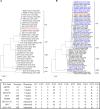
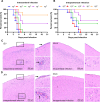
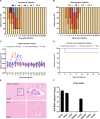
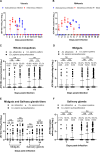

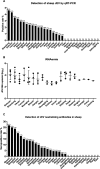
Similar articles
-
Potential Role of Birds in Japanese Encephalitis Virus Zoonotic Transmission and Genotype Shift.Viruses. 2021 Feb 24;13(3):357. doi: 10.3390/v13030357. Viruses. 2021. PMID: 33668224 Free PMC article. Review.
-
North American birds as potential amplifying hosts of Japanese encephalitis virus.Am J Trop Med Hyg. 2012 Oct;87(4):760-7. doi: 10.4269/ajtmh.2012.12-0141. Epub 2012 Aug 27. Am J Trop Med Hyg. 2012. PMID: 22927494 Free PMC article.
-
North American domestic pigs are susceptible to experimental infection with Japanese encephalitis virus.Sci Rep. 2018 May 21;8(1):7951. doi: 10.1038/s41598-018-26208-8. Sci Rep. 2018. PMID: 29784969 Free PMC article.
-
Japanese Encephalitis Virus Infection among Wild Caught Vectors Mosquitoes and Domestic Pigs in Northern West Bengal, India.Indian J Public Health. 2023 Oct 1;67(4):646-653. doi: 10.4103/ijph.ijph_1734_22. Epub 2023 Dec 29. Indian J Public Health. 2023. PMID: 38934834
-
The Potential Use of Wolbachia-Based Mosquito Biocontrol Strategies for Japanese Encephalitis.PLoS Negl Trop Dis. 2015 Jun 18;9(6):e0003576. doi: 10.1371/journal.pntd.0003576. eCollection 2015. PLoS Negl Trop Dis. 2015. PMID: 26086337 Free PMC article. Review.
References
-
- Di D., Li C. X., Zhang J. J., Hameed M., Wang X., Xia Q. Q., Li H., Xi S. M., Li Z. J., Liu K., Li B. B., Shao D. H., Qiu Y. F., Wei J. C., Ma Z. Y., Experimental infection of newly hatched domestic ducklings via Japanese encephalitis virus infected mosquitoes. Pathogens 9, 371 (2020). - PMC - PubMed
-
- Muller D. A., Young P. R., The flavivirus NS1 protein: Molecular and structural biology, immunology, role in pathogenesis and application as a diagnostic biomarker. Antiviral Res. 98, 192–208 (2013). - PubMed
-
- Unni S. K., Ruzek D., Chhatbar C., Mishra R., Johri M. K., Singh S. K., Japanese encephalitis virus: From genome to infectome. Microbes Infect. 13, 312–321 (2011). - PubMed
-
- Pan X. L., Liu H., Wang H. Y., Fu S. H., Liu H. Z., Zhang H. L., Li M. H., Gao X. Y., Wang J. L., Sun X. H., Lu X. J., Zhai Y. G., Meng W. S., He Y., Wang H. Q., Han N., Wei B., Wu Y. G., Feng Y., Yang D. J., Wang L. H., Tang Q., Xia G. L., Kurane I., Rayner S., Liang G. D., Emergence of genotype I of Japanese encephalitis virus as the dominant genotype in Asia. J. Virol. 85, 9847–9853 (2011). - PMC - PubMed
MeSH terms
LinkOut - more resources
Full Text Sources

